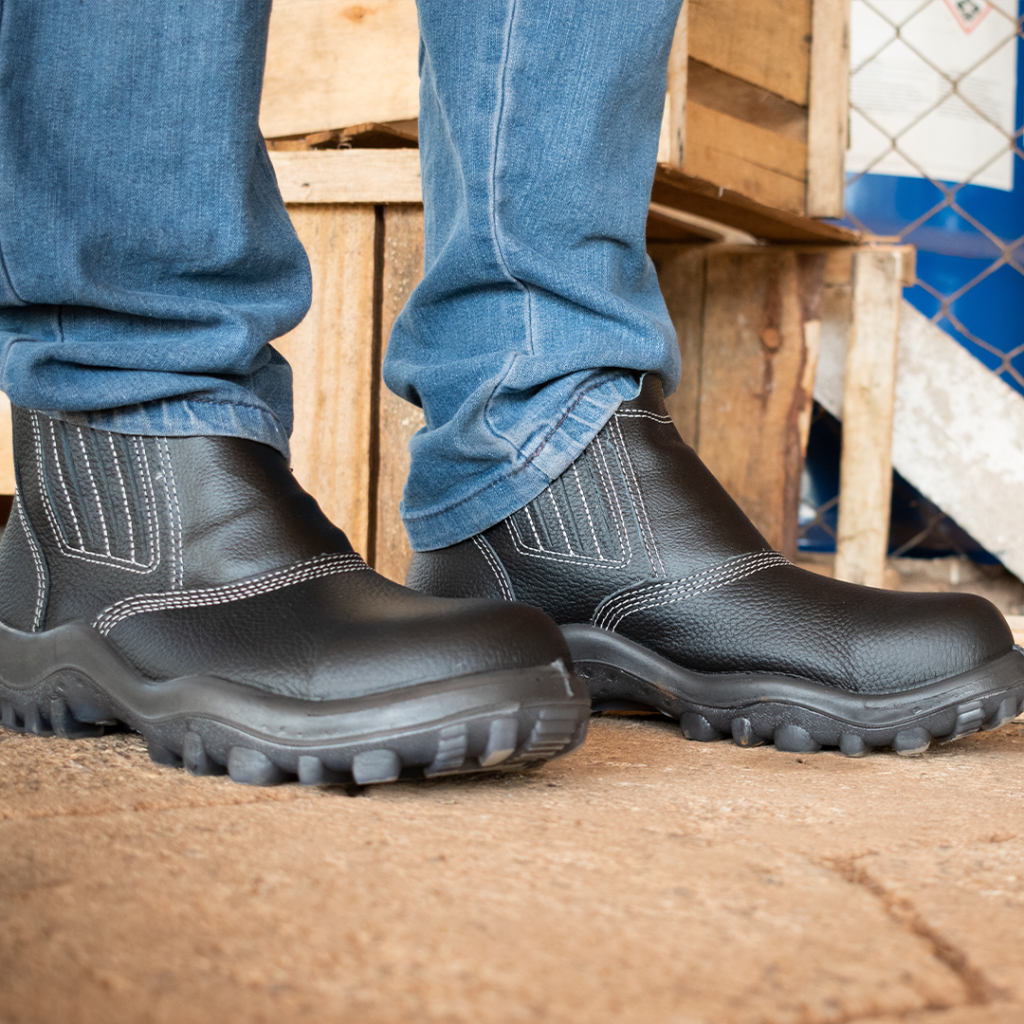How to choose the best safety shoes
How to choose the best safety shoes
How to choose the best safety shoes
The Statistical Yearbook of Social Security records nearly 39 thousand cases of occupational accidents involving the feet of Brazilian workers, being the second most affected part of the body. Data like this prove that the use of safety shoes is essential, an important Personal Protective Equipment (PPE) required by the standardization of Occupational Health and Safety.
Safety shoes must protect the feet of users in the most different professions, whether in industry, commerce or services. Regulatory Norm No. 6 classifies it according to some possibilities of occupational risks: for protection against impacts of falling objects on the toes, against agents from electric energy, thermal agents, abrasive and shoring agents, cutting and piercing agents, chemical agents and against moisture from operations using water.
Manufactured according to specific technical standards, safety shoes, year after year, have been evolving in technology, quality, comfort and design. Different models are available on the market. They are manufactured with the most varied materials and components, each one suitable for a specific occupation. So making the right choice requires care and attention.
FACTORS
The acquisition of the employee’s PPE is the company’s responsibility, and the choice of the ideal equipment will reflect, not only on safety, but also on the employee’s productivity. To make sure you are getting the right safety shoes, the employer needs to take some factors into account.
One is to know exactly what types of occupational risks employees may be exposed to, whether physical, chemical, biological, ergonomic or accident. Aware of the risks in the work environment, the employer will know what type of protection the safety footwear should offer. Such information can be identified through the symbologies reported on the product or on its packaging.
COMPONENTS
Observing the PPE components is also necessary. One is the toe cap. The part attached to the toe of the safety shoe can be found in three types of materials for protection in different situations: PVC, when there is no danger of falling objects; steel, against falling objects, perforations and cuts; and composite, lighter than the others, used in the situations mentioned above, except for the risk of cuts.
Another component to be observed is the leather, which comprises the entire upper part of the safety footwear. It is of paramount importance, as it protects in certain impact situations, such as falling objects and perforations. Generally, leather uppers made of leather, scrap, vangue, synthetic, rubber, nylon, PVC and PU (polyurethane) are generally found on the market.
The sole is another important component of safety shoes, because, more than protecting your feet against various occupational risks, it is also responsible for the comfort of the user. The main types of existing soles are monodensity and bidensity, depending on the amount of PU injection. In turn, the insoles work as an extra layer of protection next to the sole.
TEST
Before purchasing safety shoes, it is still necessary to know if they have been manufactured and tested in accordance with the requirements specified in the technical standards for each type of occupational risk.
More than protecting the worker against different occupational risks, safety shoes need to be comfortable, after all, they will be part of the user’s daily routine for several hours. It is therefore important to analyze items such as lightness, impact cushioning, adequate size and flexibility.
The origin of the PPE is another important factor to be observed. You need to choose a reliable manufacturer or store, where you can find products of proven quality and the best cost-benefit guarantee.

